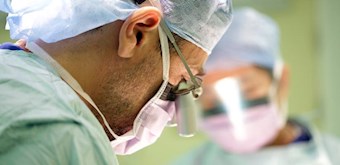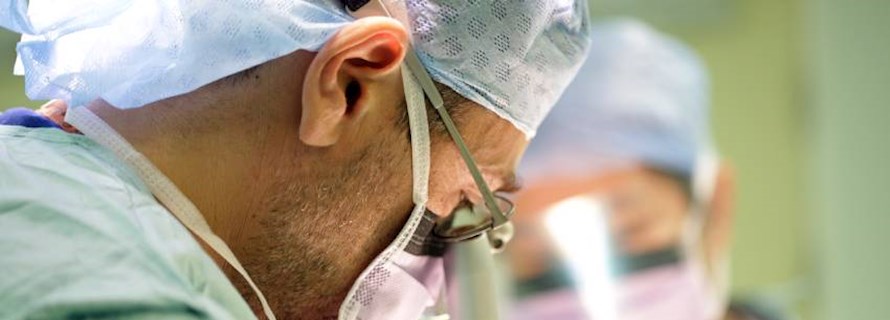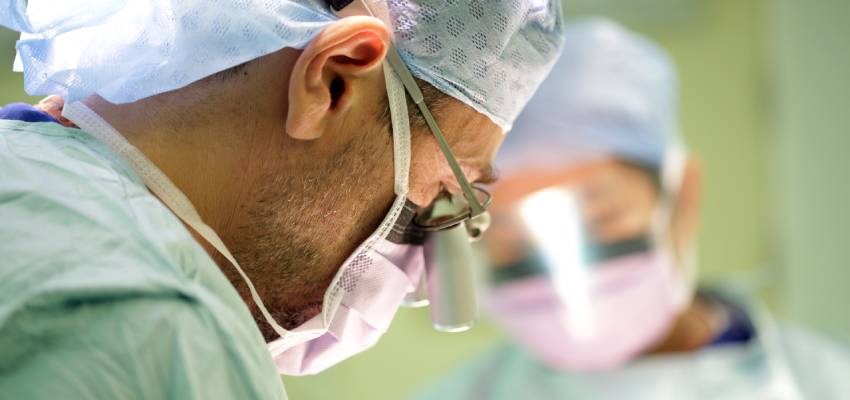Lumbosacral plexus surgery
Surgical treatment of lumbosacral plexus injuries
This procedure repairs lumbosacral nerves to restore function in the lower limb
What is the lumbosacral plexus?
Damage to the pelvis, such as a traffic accident, can damage the lumbosacral plexus. This can cause pain and weakness in the lower limb, which can feel like burning, cramping and tingling.
Moving the hip, knee, ankle, foot and toes can be impossible. The hip may also stop working if the gluteal nerves have been badly damaged.
Leading surgeon, Mr Marco Sinisi at our Peripheral Nerve Injury (PNI) unit at The Wellington Hospital is an expert at carrying out lumbosacral plexus surgery, restoring movement in the leg and treating pain.
Need to know
-
What happens during lumbosacral plexus surgery icon plus
The treatment consists of surgery in the attempt of reconnecting the most important nerves to regain function in the lower limb. At times, they are reconnected directly into the spinal canal.
Sometimes nerve reconnection is performed with nerve grafts taken from other parts of the body. The nerve acts as a tube or cable, guiding the nerve fibres until they grow across the gap.
You may also have a nerve transfer. This is where (less valuable) undamaged nerves near the injury are used to replace the damaged nerve in order to restore function. These procedures are carried out under general anaesthetic. -
How to prepare for surgery icon plus
Your consultant will explain the procedure and how to prepare. They'll also answer any questions you may have. You won't need to stay overnight and can go home after your surgery.
You should arrange to have someone take you home as you won't be able to drive. Like all procedures, there may be some risks and side effects involved. Your consultant will explain these to you. -
After surgery icon plus
Recovery depends on the severity of the injury. It can take a long time for the nerve fibres to grow along the nerve and into the adjoining muscle — approximately 1mm a day.
Intensive physiotherapy plays a vital role when recovering from nerve repair surgery and helps to restore function. You may also need sensory stimulation and motor stimulation.
Mr Marco Sinisi - Peripheral Nerve Specialist
At HCA Healthcare UK, we work with leading consultants to enable access to the the latest techniques and treatment.
Mr Marco Sinisi is our lead consultant for Peripheral Nerve Injuries based at The Wellington Hospital. Mr Sinisi has a comprehensive knowledge of nerve injuries and has experience in a wide range of nerve problems from trauma through to sports injuries. He is experienced in managing complex nerve conditions as well as performing complex nerve operations.




Our Locations
From complex nerve surgery to diagnostic procedures and nerve conduction studies, we provide exceptional nerve injury care across our network of hospitals, outpatient centres and specialist clinics.
-
Peripheral Nerve Injury (PNI) Unit
The PNI Unit at The Wellington Hospital
Wellington Place
London NW8 9LE
-
The Wellington Hospital Elstree Waterfront
The Waterfront Business Park
Beaufort House, Elstree Road
Elstree WD6 3BS
Book an appointment
Our team can help with any enquiries or you can make an appointment with one of our experienced consultants.
Call us today
020 7079 4344